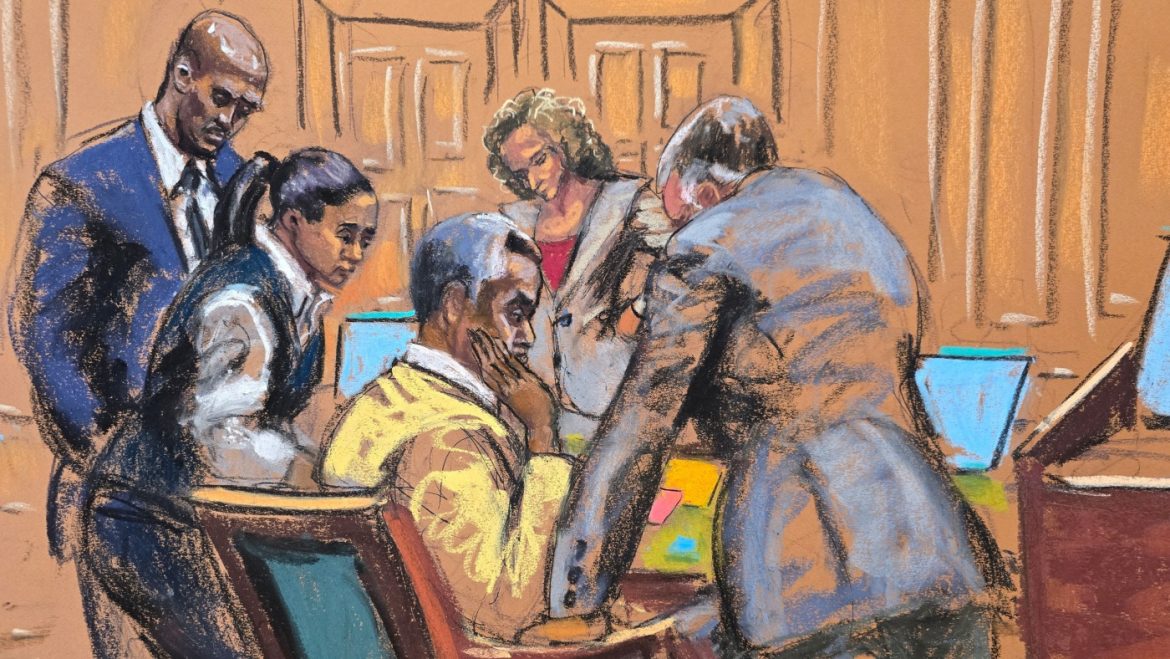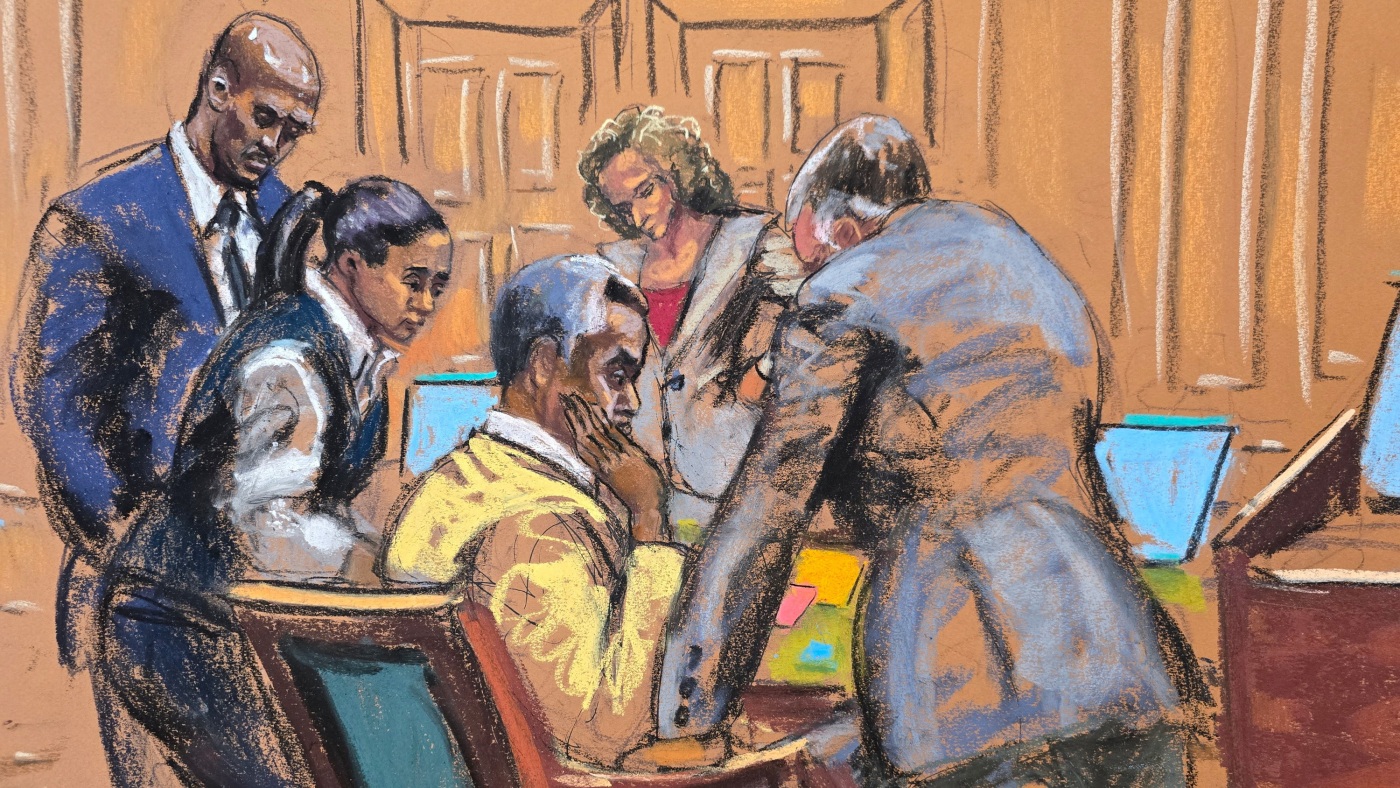The air in the lower Manhattan federal court is thick with anticipation as the jury deliberates the fate of Sean “Diddy” Combs. After weeks of testimony, legal arguments, and evidence presentation, the trial has reached its critical juncture. Combs, a titan in the music industry, faces serious charges that could result in a life sentence. The complexity of the case, combined with the high-profile nature of the defendant, has made this trial a focal point of public and media attention. To understand the gravity of the situation, it is essential to examine the charges, the key moments in the courtroom, and the challenges the jury faces in reaching a verdict.
The charges against Combs are multifaceted and interconnected, creating a legal labyrinth that the jury must navigate. The prosecution has presented a case built on three primary charges: sex trafficking, racketeering conspiracy, and transportation for prostitution. Each charge carries significant legal weight and requires the prosecution to meet a high burden of proof.
Sex trafficking is perhaps the most serious charge, alleging that Combs engaged in the recruitment, harboring, transportation, or obtaining of individuals for commercial sex acts through force, fraud, or coercion. The prosecution must prove that Combs’ actions were not consensual and that he exerted control over the alleged victims. This charge is particularly complex because it requires establishing a clear link between Combs’ actions and the exploitation of the victims. The defense, however, has argued that the prosecution’s case is built on shaky evidence and lacks concrete proof of coercion.
Racketeering conspiracy is another critical charge, painting a picture of an ongoing criminal enterprise orchestrated by Combs. The prosecution argues that Combs used his influence and resources to further the goals of the alleged racketeering enterprise. This charge requires demonstrating a structured organization and a series of related criminal acts. The defense has countered by downplaying the extent of Combs’ alleged criminal activity, arguing that the prosecution’s case is built on speculation rather than evidence.
Transportation for prostitution focuses on the act of transporting individuals across state lines or internationally with the intent that they engage in prostitution. The prosecution must prove Combs’ knowledge of and intent to facilitate such activities. The defense has sought to cast doubt on the credibility of the witnesses and challenge the government’s portrayal of Combs as a criminal mastermind.
The trial itself has been a spectacle, drawing intense media attention and public scrutiny. Key moments have shaped the narrative and likely influenced the jury’s perspective. The prosecution, led by Maurene Comey, presented numerous witnesses, including alleged victims, who provided often graphic and emotional testimony. The defense, led by Marc Agnifilo, adopted a strategy of downplaying the extent of Combs’ alleged criminal activity while acknowledging instances of domestic violence. The jury instructions and questions have also played a crucial role in guiding the jury through the complex legal concepts and clarifying the elements of each charge.
The jury’s task is far from simple. They must sift through weeks of testimony, hundreds of exhibits, and complex legal jargon to arrive at a unanimous verdict. The credibility of witnesses is a critical factor, as the jury must assess the motivations, biases, and consistency of each witness’s testimony. The burden of proof is another significant consideration, as the prosecution must prove Combs’ guilt beyond a reasonable doubt. The complexity of the charges adds another layer of difficulty, as the jury must determine whether the evidence supports each charge individually and whether the prosecution has successfully demonstrated the existence of a racketeering conspiracy.
The high-profile nature of the trial inevitably exposes the jury to media coverage and public opinion. Maintaining impartiality and focusing solely on the evidence presented in court is crucial but can be challenging in such a sensational case. The jury’s initial day of deliberations ended without a verdict, indicating the seriousness with which they are approaching their task. The request for clarification regarding drug distribution further highlights the meticulousness of their review and their determination to understand all aspects of the case.
Predicting the outcome of a jury trial is always a risky endeavor. The complexities of the Sean Combs case, coupled with the subjective nature of jury deliberations, make it particularly difficult to forecast. A conviction on all charges could result in a life sentence for Combs, while an acquittal would represent a major victory for the defense. It is also possible that the jury could reach a split verdict, convicting Combs on some charges while acquitting him on others, or even fail to reach a unanimous decision on any of the charges, resulting in a hung jury and a potential retrial.
Regardless of the jury’s decision, the Sean Combs trial has already left an indelible mark. It has reignited conversations about power, abuse, and accountability within the entertainment industry. The outcome will undoubtedly have far-reaching consequences, not only for Sean Combs but also for the broader cultural landscape. It could embolden other victims to come forward, prompting further investigations and potentially reshaping the dynamics of power within the industry. Or, it could serve as a cautionary tale, highlighting the difficulties of achieving justice in cases involving powerful and influential figures. Only time will reveal the true impact of this trial and the legacy it leaves behind.


